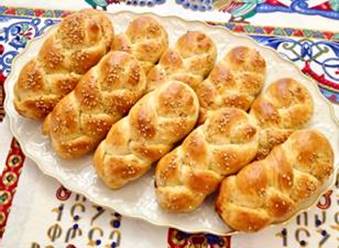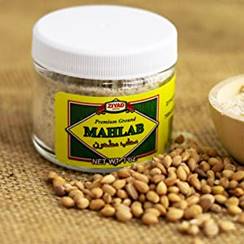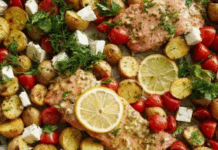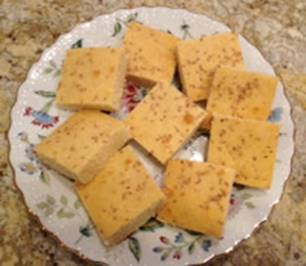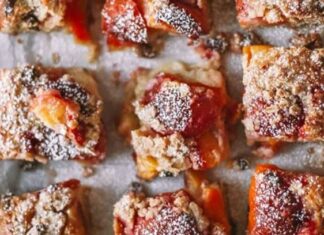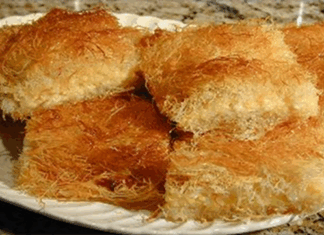Robyn Kalajian from TheArmenianKitchen.com suggests these two traditional Lenten or Easter recipes: Armenian Chorag and Mahlab Cake. Each contains mahlab (or mahlepi), an aromatic spice derived from the ground kernel of the St. Lucie cherry. Prized across Greece, Turkey, Syria, Iran, and other Mediterranean and Middle Eastern countries, mahlab is often incorporated into breads and pastries.
“Mahlab makes a great addition to cakes, cookies, pies, brownies, muffins, cheese, and fruit salad, and is excellent in chocolate preparations. Treat mahlab like nutmeg. You don’t need too much for it to make an effect, but it can make all the difference between an ordinary dessert and something alluring. Many spiced desserts would benefit from a judicious application of the stuff, but using too much can cause bitterness. Like saffron and other more precious spices, mahlab is rather expensive. Most recipes call for a small amount, allowing a container to last for multiple bakes,” adds Robyn.
Mahlab, whole seed or powdered, is sold in specialty food shops (such as https://foodsofnations.com/product/mahlab-mehleb-or-mahlepi-whole/ Kalustyan’s and <https://sahadis.com/catalogsearch/result/?q=mahlab> Sahadi’s) and via online retailers like <https://snukfoods.com/products/whole-mahlab?variant=14691811131504¤cy =USD> Snuk Foods, both pre-ground and as whole kernels. Of course, most chefs and cookbooks recommend buying the kernels whole and grinding them at home in order to capture the spice’s full aroma. It appears in Syrian string cheese—the plump, braided ropes of stretchy white cheese (similar to mozzarella) that come speckled with black nigella seeds. Not all recipes for the cheese, which is still commonly made at home, include the powdered kernel. But those that do benefit tremendously from its floral presence.
In Greek cuisine, mahlep is sometimes added to different types of holiday tsoureki breads, including Christmas bread, the New Year’s vasilopita and the braided Easter bread called cheoreg (or choreg) in <https://en.wikipedia.org/wiki/Armenian_cuisine> Armenian and paskalya çöreği in <https://en.wikipedia.org/wiki/Turkish_cuisine> Turkish. In Turkey, it is used in poğaça scones and other pastries. In the Arabic Middle East, it is used in ma’amoul scones. In Egypt, powdered mahlab is made into a paste with honey, sesame seeds and nuts, eaten as a dessert or a snack with bread. In England, it is used in shortbiscuits, and in sugar syrups to go over fruit salad or to flavor whipped cream in the same way as you would use vanilla. (https://ottolenghi.co.uk/shop/hampers-and-gifts/spices).
Liliana Myers, who is the pastry chef at Safta, Alon Shaya’s modern Israeli restaurant in Denver, incorporates mahlab powder into Safta’s date-filled ma’amoul shortbread pastries. She also uses it in less traditional ways: in a flourless almond cake served on Passover and in an Ottolenghi-inspired Persian love cake offered for Valentine’s Day.
“Basically whenever a recipe calls for almond extract, I use mahlab,” she says. https://www.tabletmag.com/sections/food/articles/mahlab-fragrant-addition).
